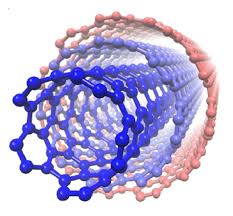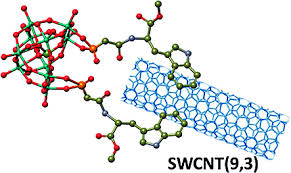Modeling the Electrical Properties of Schottky Bonded Carbon Nanotubes MWNT and SWNT (Based on Nano-Microelectronics PhD) (Educational-Research Ph.D.)
Researcher and author: PhD student Afshin Rashid
Note: The nanotubes are divided into two single-walled (SWNT) and multi-walled (MWNT) groups, with single-walled carbon atoms arranged into three major groups of armchair and (chiral) carbon tubes ( chiral) which are metallic and are divided into semiconducting zigzag.
Single-walled carbon nanotubes consist of carbon only and a simple sheet structure of regular hexagons. Some single walls can be conductive or semiconductor. This high electrical conductivity depends on the precise geometry of the carbon atoms. They have been referred to as single-dimensional phenomena since the beginning of work on monolayers. Because of their interest in these single-walled nanotubes and their attempt to replace them in industry, based on theoretical calculations and laboratory effects, on excellent mechanical properties. And their electrical conductivity is similar to that of metals. The production of single-walled nanotubes is costly and production is difficult to produce along with stabilizing their properties during processing. Since nanotubes are now used in polymer reinforcement to improve their thermal and electrical properties, the use of multi-walled carbon nanotubes has been greatly enhanced to improve their mechanical properties. On the other hand, existing techniques for producing single-walled nanotubes are not efficient enough and do not provide the required purity. The purification of these materials is very difficult and may eventually damage the nanotube structure.
The smooth surface of the nanotubes allows the gas to pass through them far higher than conventional micro-cavity membranes used in gas separation. Therefore, gases such as hydrogen and carbon dioxide can be separated by conduction into the nanotube. Applying pressure to a nanotube can change its electrical properties, which can increase or decrease the conductivity depending on the type of stretch of a nanotube. This is due to the quantum transformation of electrons. It is therefore possible to make nanotube-based transformers or transmitters that are highly sensitive to very small forces. The ability of nanotubes to sense very small pressure changes and to convert this pressure into an electrical signal can also give rise to very small pressure changes in the fabrication of nanotube switches.
Conclusion:
MWNT and SWNT nanotubes at room temperature have the highest electrical mobility coefficient than any other known material. Put a layer of nanotubes in the nanotube can be magnetic or adding electrons or holes into the magnetic properties of nanotubes created. This property makes it possible to build tools to predict where the magnetic and electrical connections are separated And. Magnetic coupling can be used to polarize nanotubes - manipulate the spins - and use non-magnetic couplings for voltage-current electrodes. Their magnetic strength can also be measured .
Author: Engineer Afshin Rashid
PhD student of Nano-Microelectronics at Islamic Azad University, Science and Research Branch, Tehran




